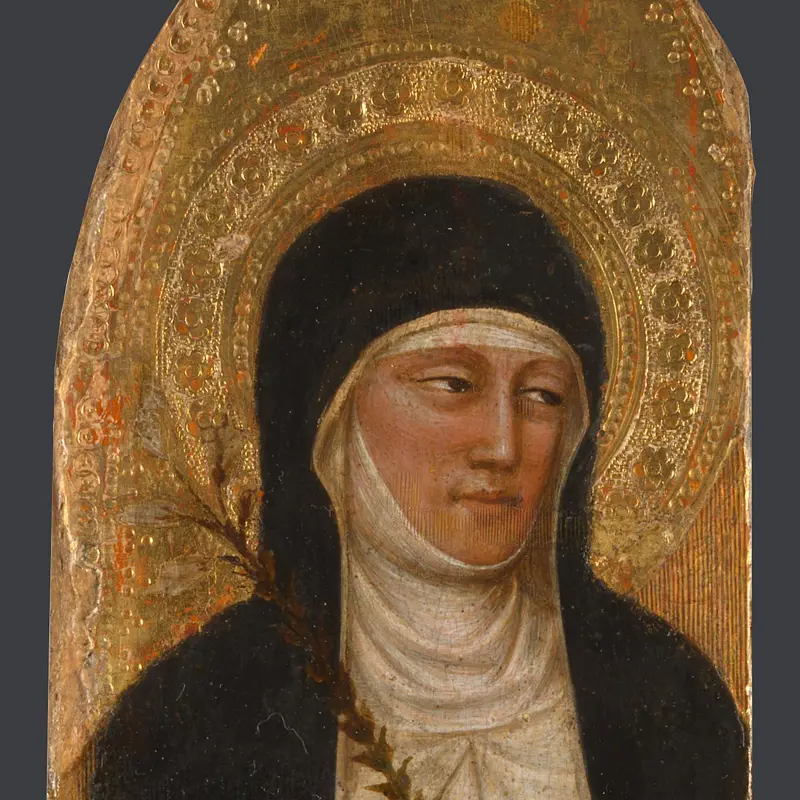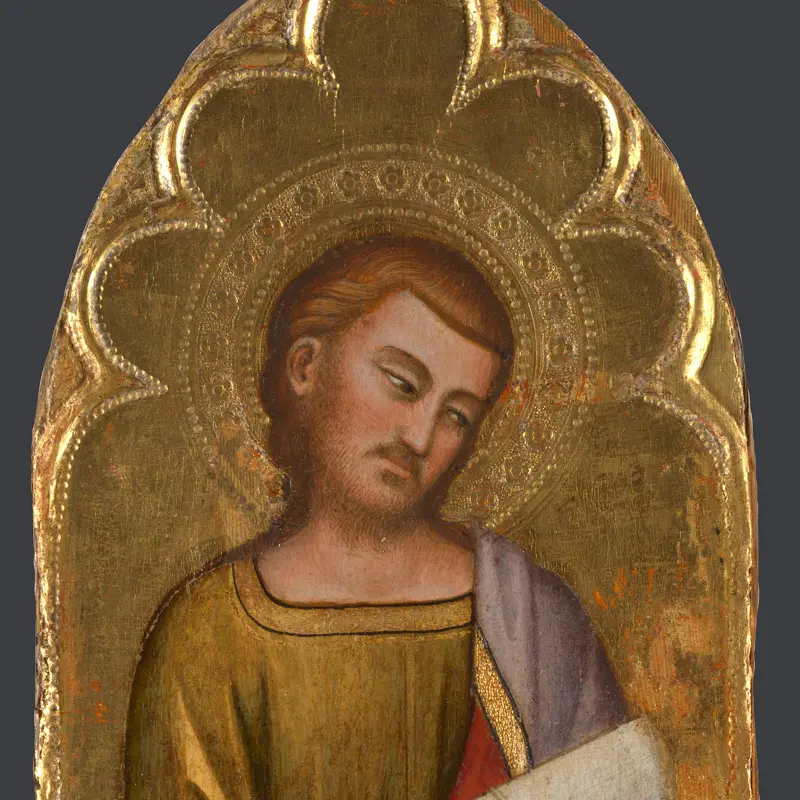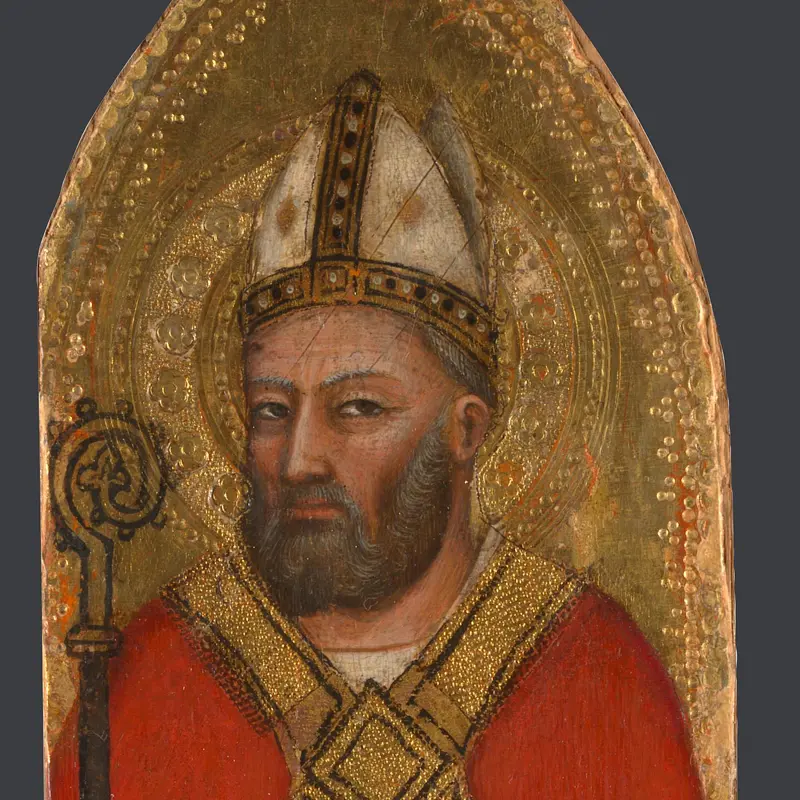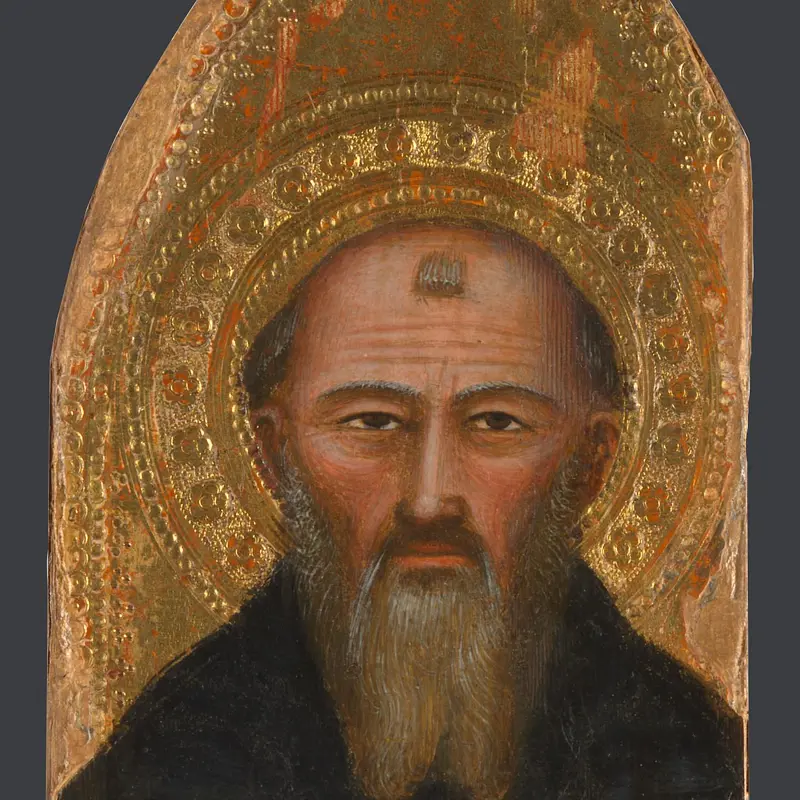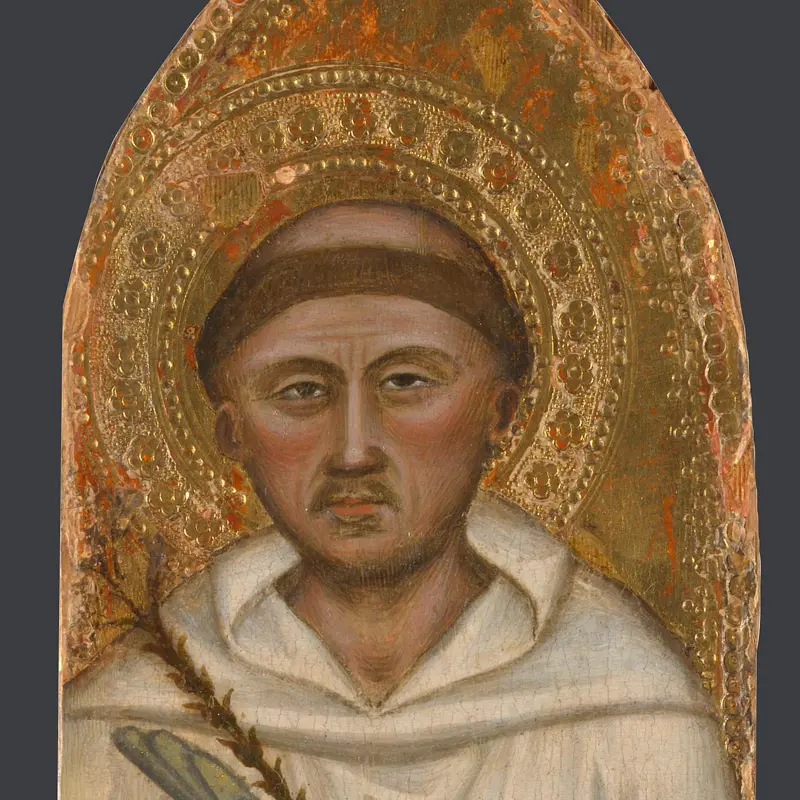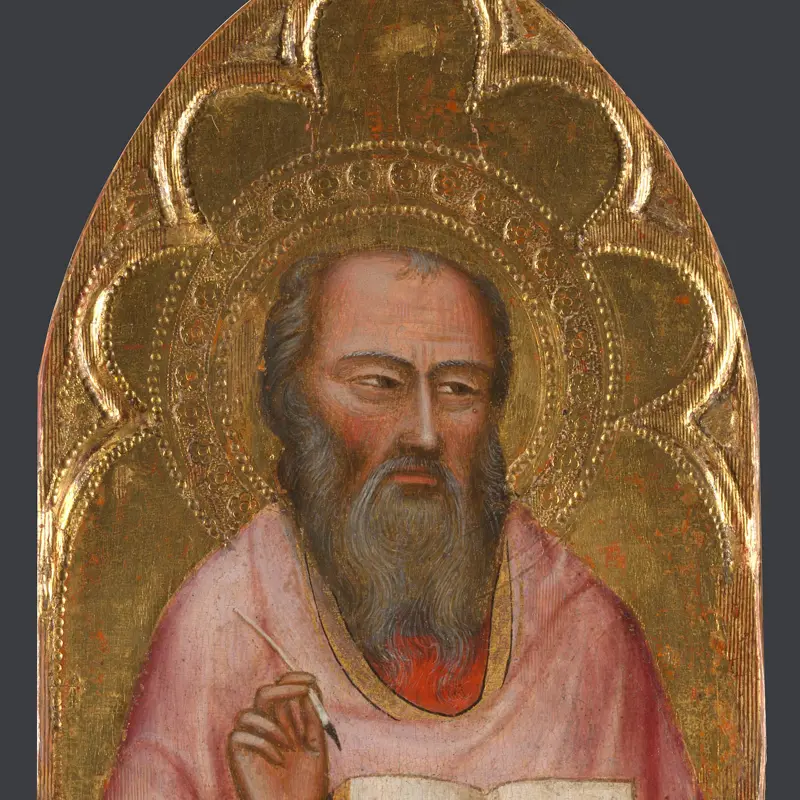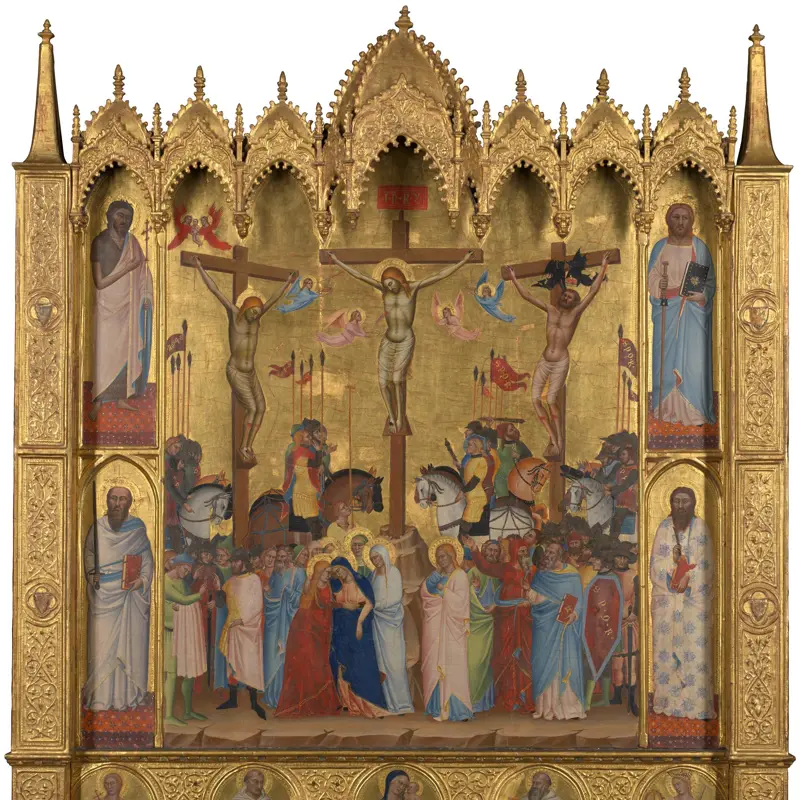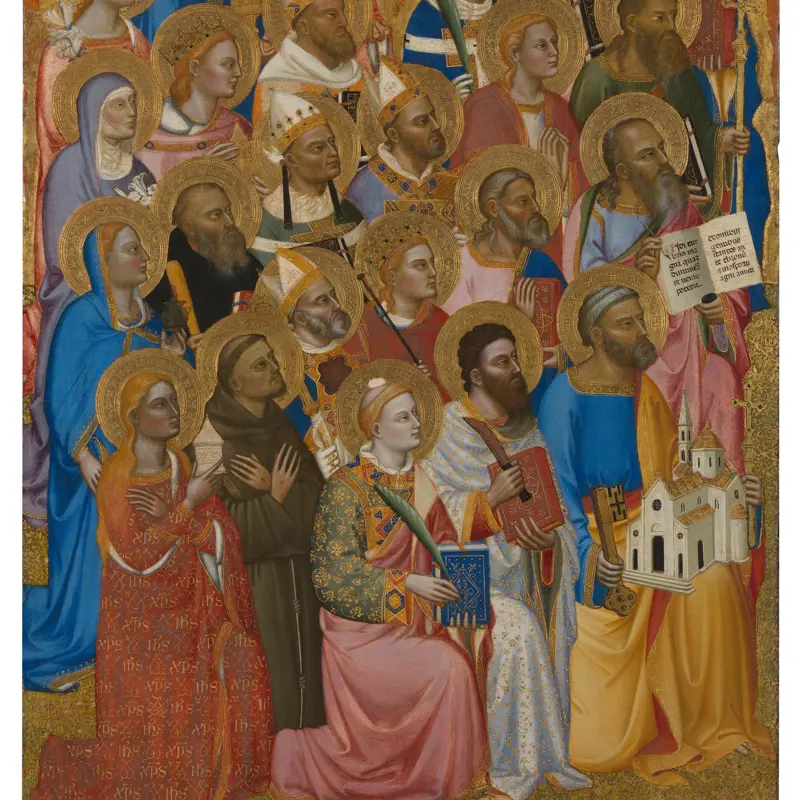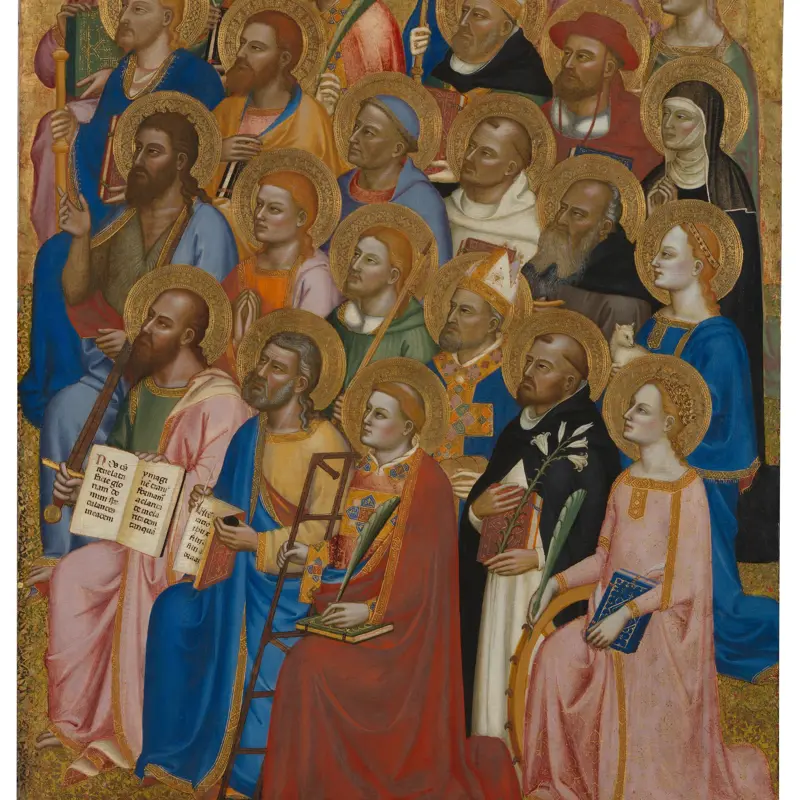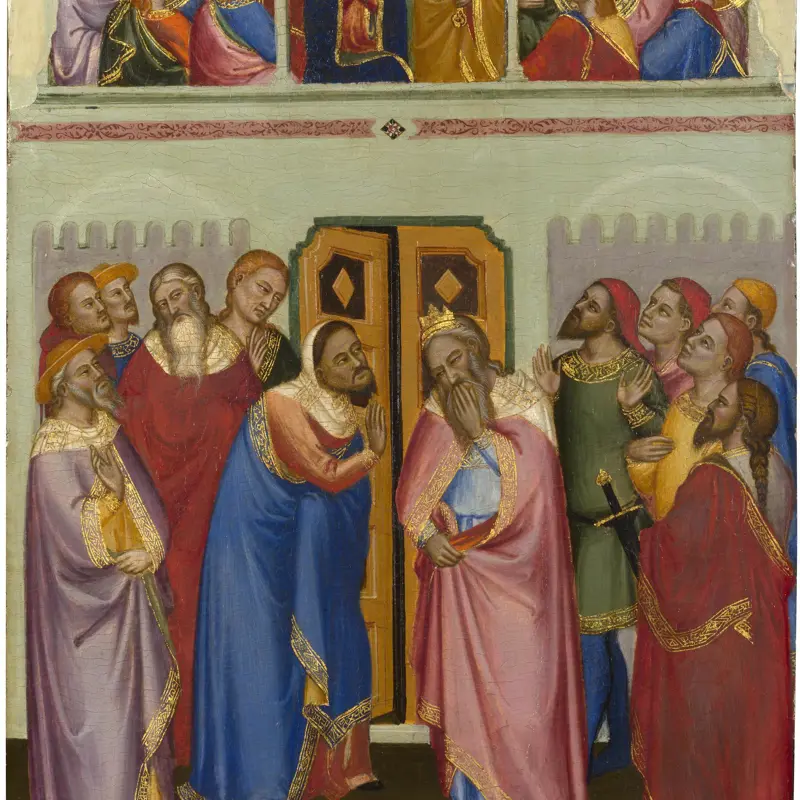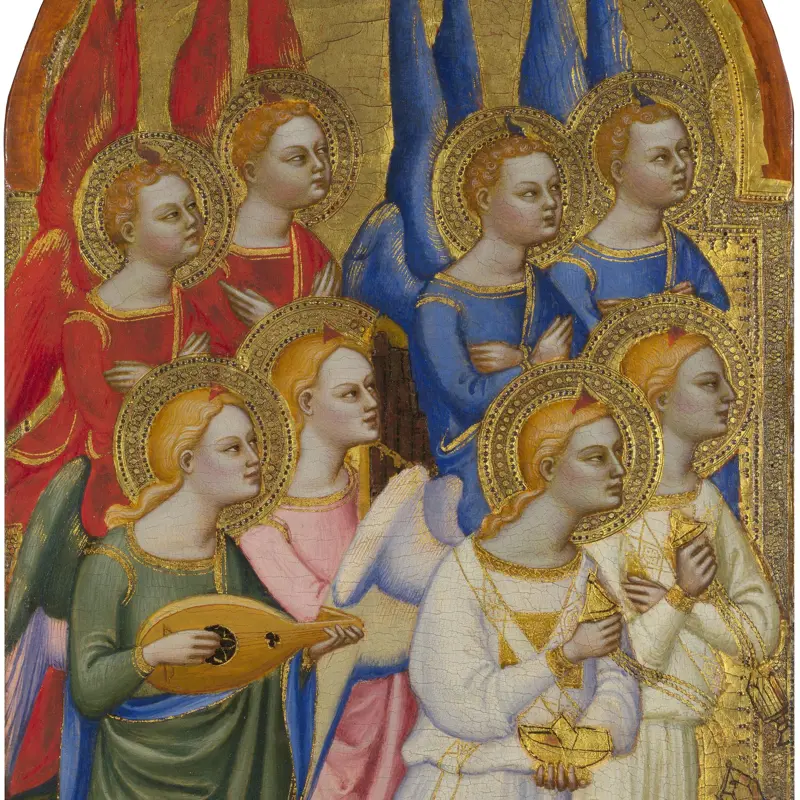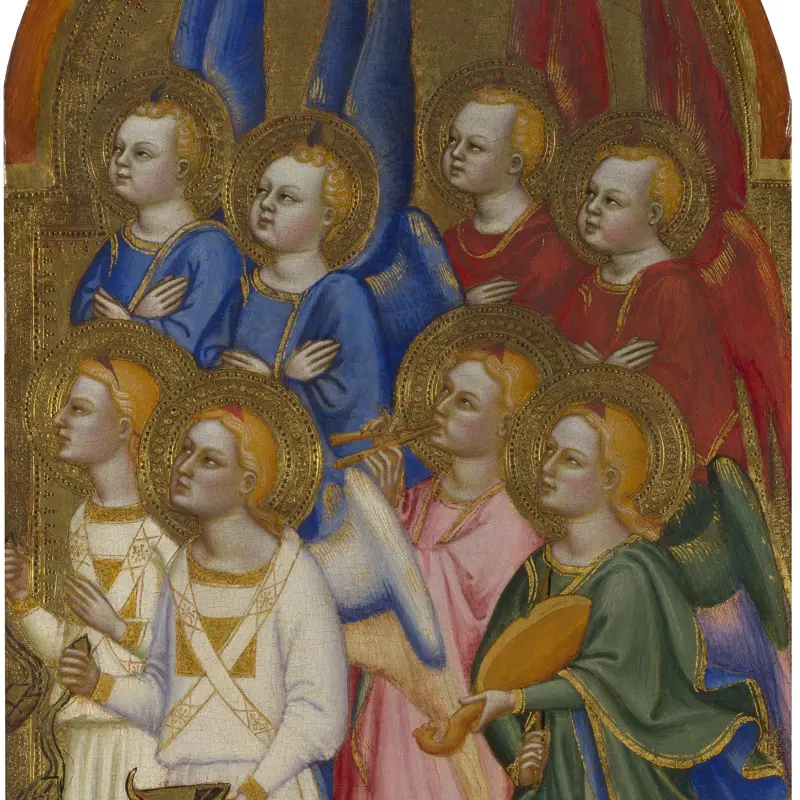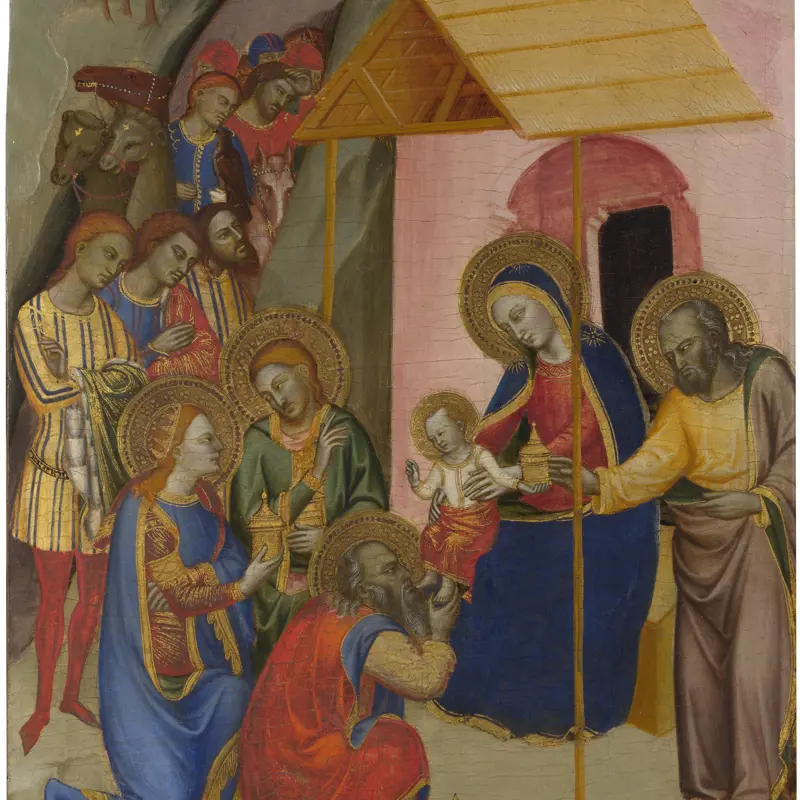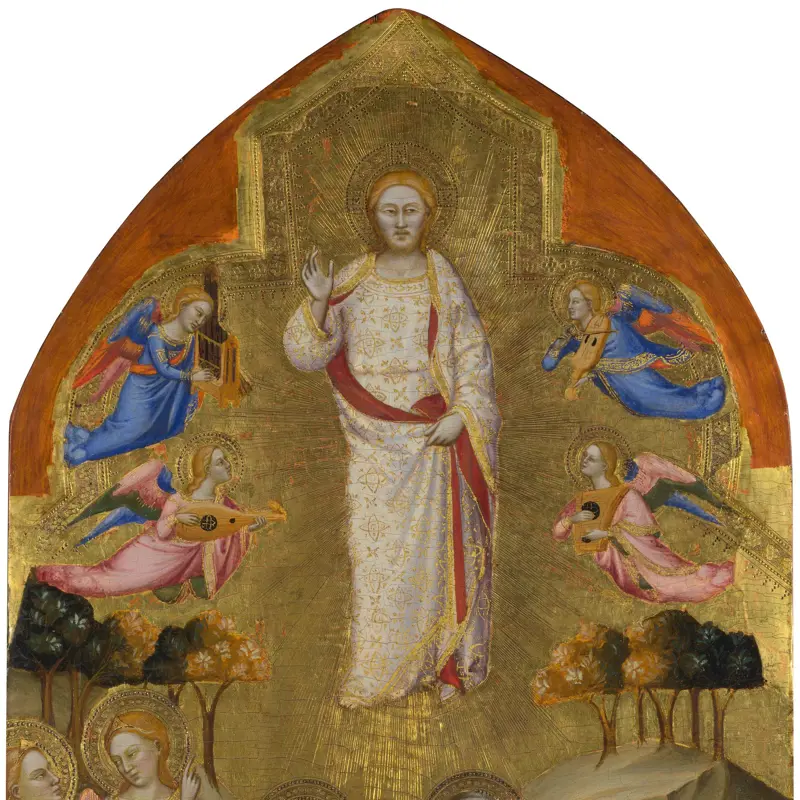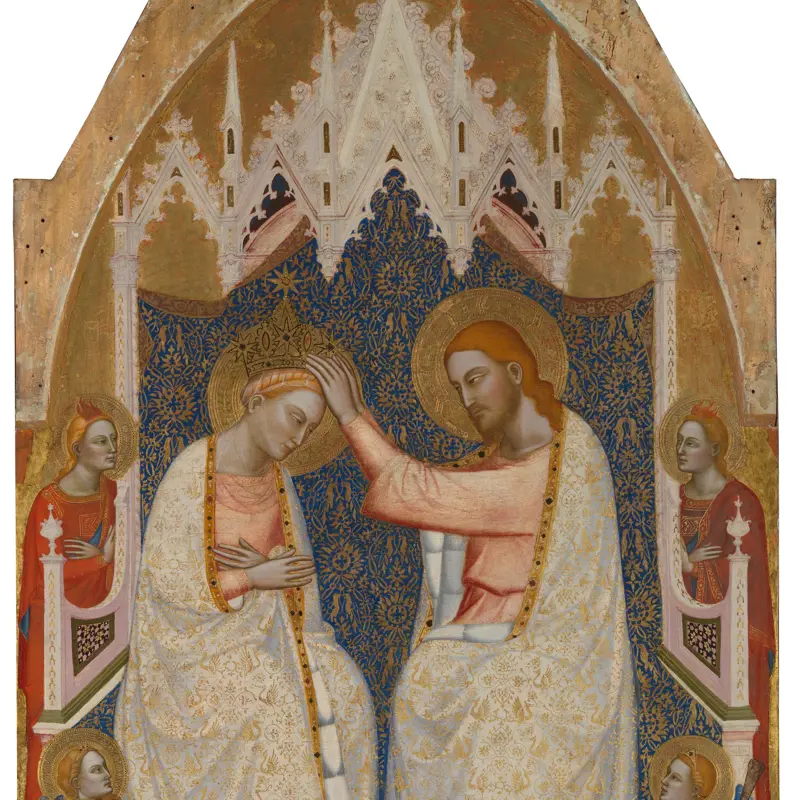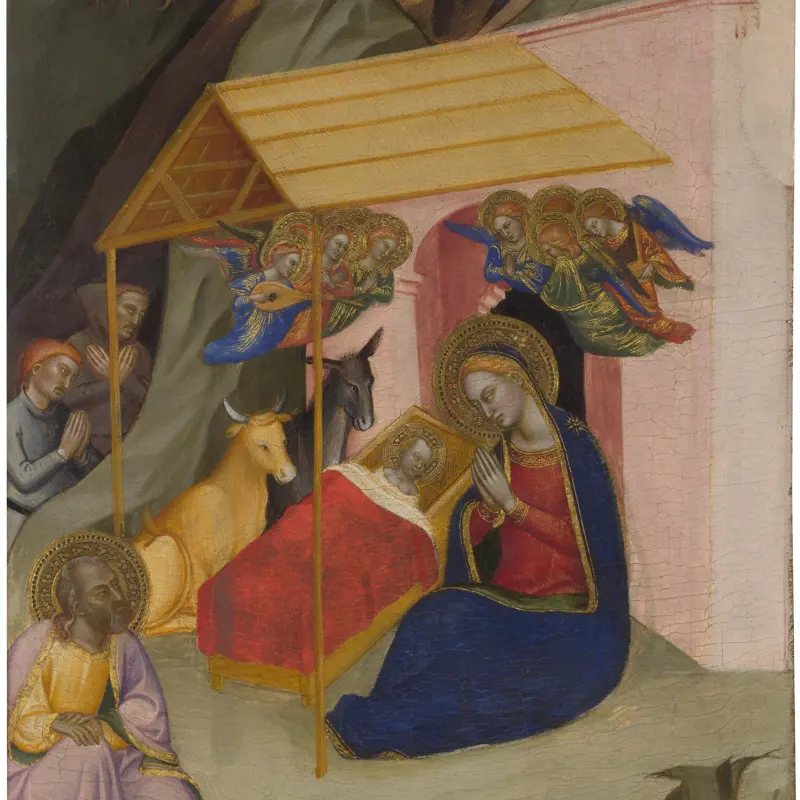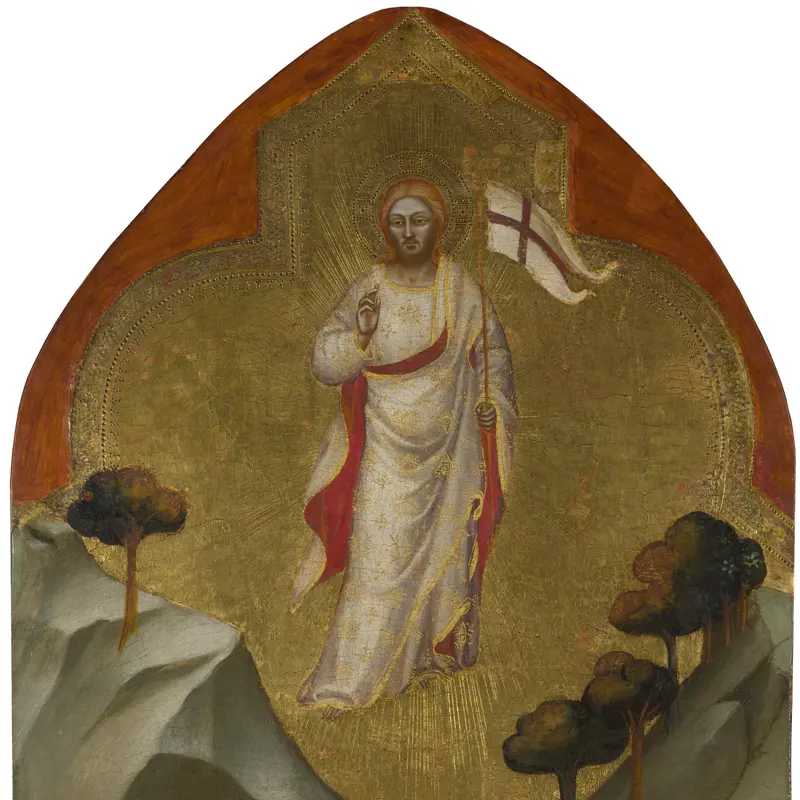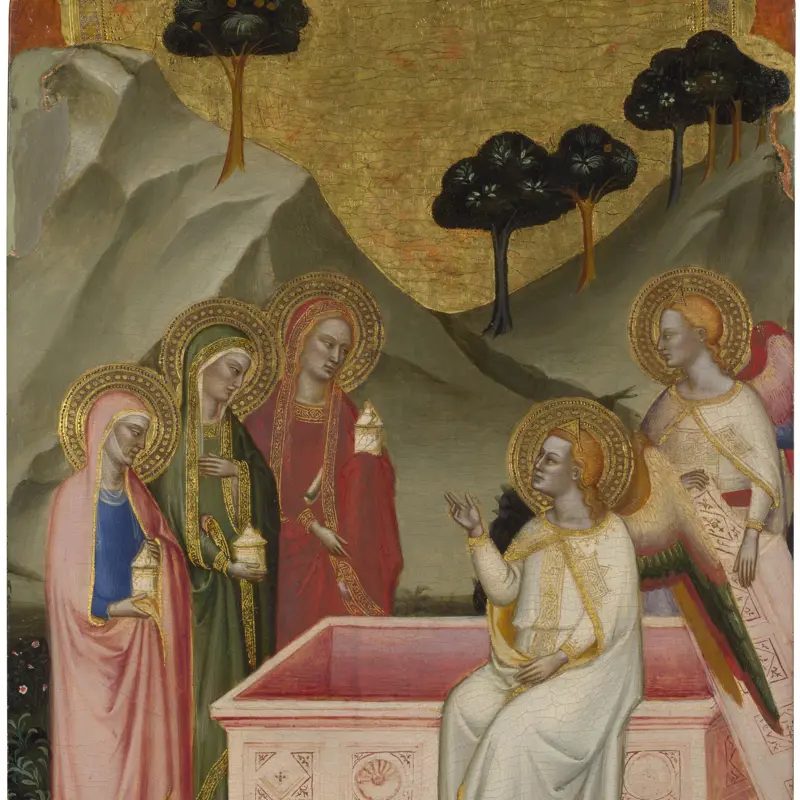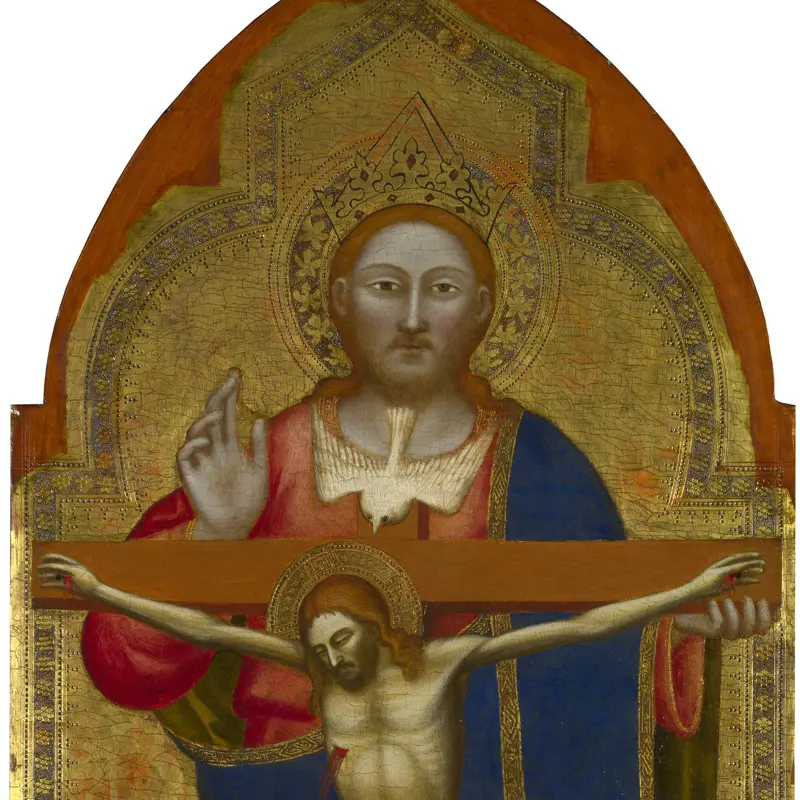Jacopo di Cione and workshop, 'Saint John the Evangelist', about 1365-70
About the work
Overview
John and James, sons of Zebedee, were fishermen who became disciples of Jesus. Both were present throughout his ministry and Passion. John is thought to be the person referred to in the Gospel of Saint John as 'the beloved disciple', who was close to Jesus at the Last Supper, and to whom Jesus entrusted the care of the Virgin Mary at his death.
Traditionally John is supposed to have been exiled to the island of Patmos where he wrote the Book of Revelation. John was one of the four evangelists who wrote the gospels. He is sometimes called 'John the Divine'.
Key facts
Details
- Full title
- Saint John the Evangelist
- Artist
- Jacopo di Cione and workshop
- Artist dates
- Documented 1365, died 1398 -1400
- Part of the series
- The Littleton Pilaster Saints
- Date made
- About 1365-70
- Medium and support
- Tempera on panel
- Dimensions
- 49.7 × 15.5 × 2.3 cm
- Acquisition credit
- On loan from the Rector and Churchwardens of St Mary Magdalene Church, Littleton
- Inventory number
- L1085
- Location
- Not on display
- Image copyright
- On loan from the Rector and Churchwardens of St Mary Magdalene Church, Littleton, © St Mary Magdalene Church, Littleton
- Collection
- Main Collection
- Previous owners
About this record
If you know more about this work or have spotted an error, please contact us. Please note that exhibition histories are listed from 2009 onwards. Bibliographies may not be complete; more comprehensive information is available in the National Gallery Library.
Images
About the series: The Littleton Pilaster Saints
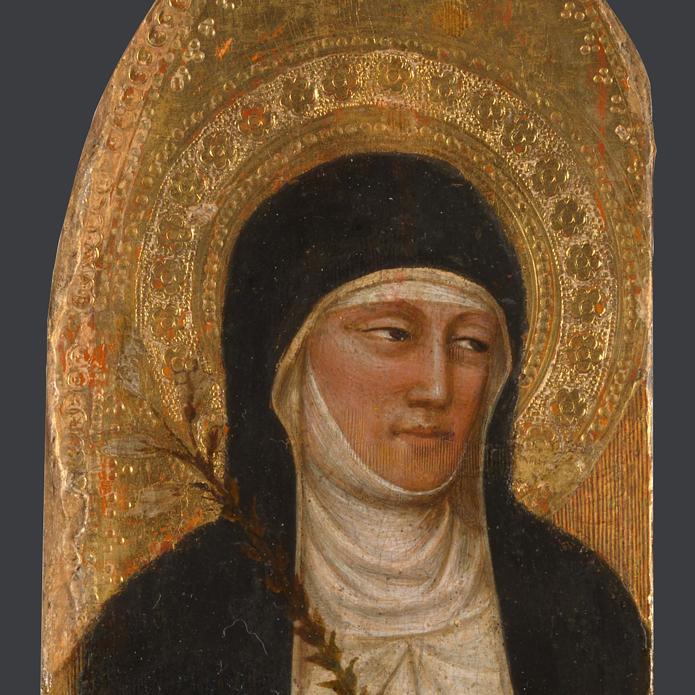
Overview
These six pilaster panels were discovered wrapped in newspaper in 1995 in the church of Saint Mary Magdalene, Littleton, having been removed during the restoration of the church in the 1970s.
They have recently been cleaned by students at the Courtauld Institute. They are first recorded in the collection of the 19th-century collector, William Young Ottley.
The presence of three saints of the Camaldolese order (reformed Benedictines) suggests they may have come from the monastery of Santa Maria degli Angeli in Florence. They may have been part of the same altarpiece as the pinnacle panel with Noli me tangere on display in the same room. This in turn has been associated with several fragments in American collections which may have formed part of an altarpiece thought to have come from a chapel dedicated to All Saints in Santa Maria degli Angeli, founded by a notary, Ser Francesco di ser Berto degli Albizzi.
The di Cione brothers, Andrea, Jacopo and Nardo dominated Florentine painting during the second half of the 14th century. Also by Jacopo and his workshop in the National Gallery is the gigantic altarpiece from San Pier Maggiore, Florence, painted 1370-71 showing the Coronation of the Virgin, and the Crucifixion.

